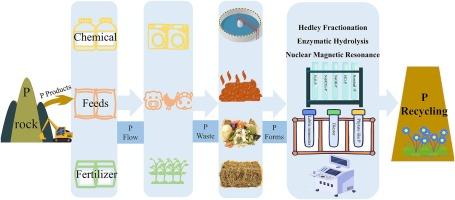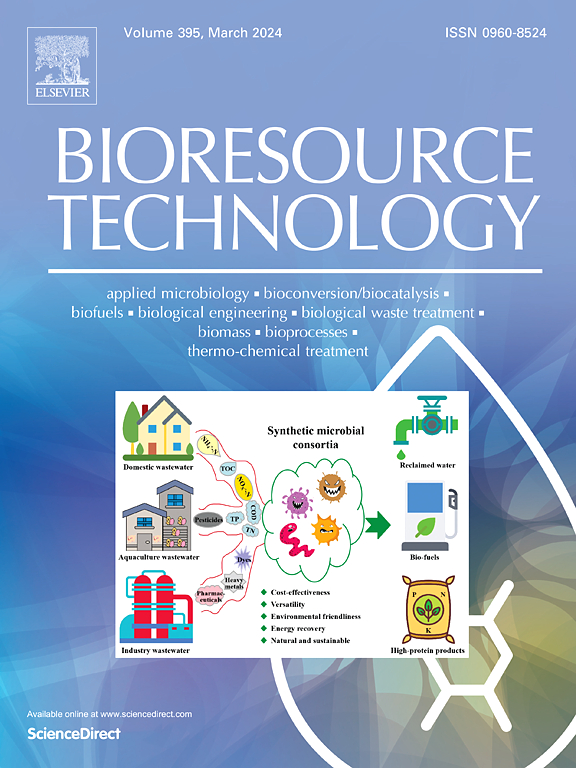各种有机废物中磷的生物利用率和回收潜力:通过酶水解和 31P NMR 进行评估。
IF 9.7
1区 环境科学与生态学
Q1 AGRICULTURAL ENGINEERING
引用次数: 0
摘要
从废物流中回收磷对于缓解磷耗竭危机至关重要。有机废物中磷的形态和含量对于确定回收方法和效率至关重要。我们结合化学顺序萃取、酶水解和核磁共振(NMR)技术,构建了一种表征七种有机废物中磷形态的方法。与污水污泥(18.22%)和餐厨垃圾(43.90%)相比,畜禽粪便和秸秆表现出更高的活性 P(H2O-P&NaHCO3-P)(占总 P 的 70.54%-84.40% 和 65.78%-85.26%)。酶水解显示,玉米(11.30%)和水稻秸秆(13.32%)的所谓活性 P 中,有超过 10% 的 P 是植酸盐类 P,不能被生物利用。这些研究结果表明,化学顺序萃取法对生物可利用态磷的测量不准确,并强调了在循环过程(沼气、堆肥)中将植酸转化为植物可利用态磷的必要性,尤其是对作物秸秆和鸡粪而言。这项工作引入了一种新的方法框架,用于评估有机废物中钾的潜在生物利用率,为优化钾回收过程提供了基础知识。本文章由计算机程序翻译,如有差异,请以英文原文为准。

Phosphorus bioavailability and recycling potential in various organic Waste: Assessment by enzymatic hydrolysis and 31P NMR
Phosphorus(P) recycling from waste streams is crucial to mitigate the P depletion crisis. P forms and contents in organic waste are critical for determining the recycling method and efficiency. We constructed an approach to characterize P forms in seven organic waste by combining chemical sequential extraction, enzymatic hydrolysis, and nuclear magnetic resonance(NMR). Livestock manure and straw exhibited a higher active P(H2O-P&NaHCO3-P)(70.54%-84.40% and 65.78%-85.26% of total P) than sewage sludge(18.22%) and food waste(43.90%). Enzymatic hydrolysis revealed over 10% P in the so-called active P of corn(11.30%) and rice straw(13.32%) was phytate-like P, which is not bioavailable. These findings indicate the chemical sequential extraction inaccurately gauges bioavailable-P and underscores the need to convert phytate into plant-available P in recycling processes(biogas, composting), especially for crop straws and chicken manure. This work introduces a novel methodological framework for assessing P potential bioavailability in organic waste, providing fundamental knowledge for the P recycling process optimization.
求助全文
通过发布文献求助,成功后即可免费获取论文全文。
去求助
来源期刊

Bioresource Technology
工程技术-能源与燃料
CiteScore
20.80
自引率
19.30%
发文量
2013
审稿时长
12 days
期刊介绍:
Bioresource Technology publishes original articles, review articles, case studies, and short communications covering the fundamentals, applications, and management of bioresource technology. The journal seeks to advance and disseminate knowledge across various areas related to biomass, biological waste treatment, bioenergy, biotransformations, bioresource systems analysis, and associated conversion or production technologies.
Topics include:
• Biofuels: liquid and gaseous biofuels production, modeling and economics
• Bioprocesses and bioproducts: biocatalysis and fermentations
• Biomass and feedstocks utilization: bioconversion of agro-industrial residues
• Environmental protection: biological waste treatment
• Thermochemical conversion of biomass: combustion, pyrolysis, gasification, catalysis.
 求助内容:
求助内容: 应助结果提醒方式:
应助结果提醒方式:


